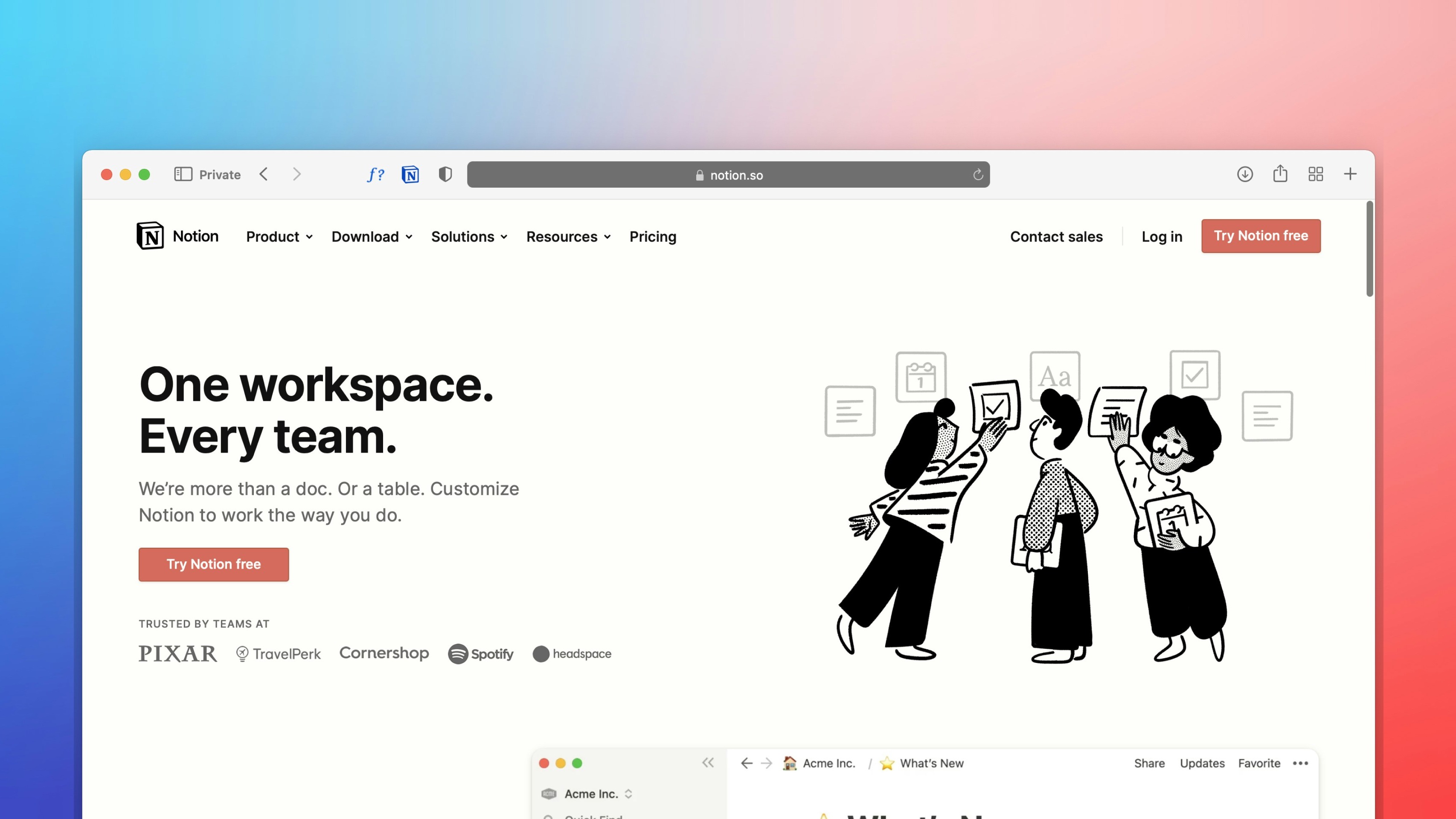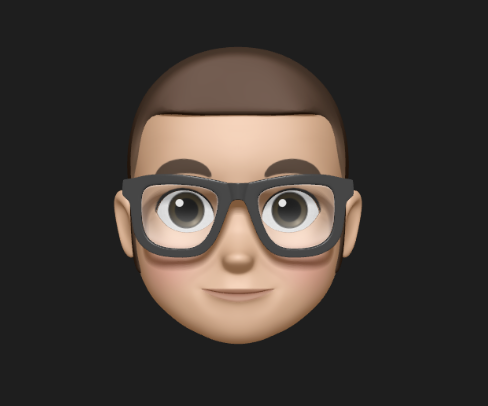 Freelancer tips
Freelancer tips Notion: What It Is, What It’s For, and How to Use It in Your Daily Life
Want to better organize your life and work? Notion can help boost your productivity. Click here to discover what this software is and what it’s used for.



As a freelancer, you know the freedom of setting your own schedule can be both a blessing and a curse.
One day, you're powering through tasks with ease, and the next, you're scrambling to meet deadlines while feeling overwhelmed by endless to-do lists.
According to recent studies, freelancers are twice as likely to struggle with work-life balance compared to traditional office workers.
It's no wonder that many of us find ourselves caught in a constant juggle between professional demands and personal commitments.
But here's the good news: a well-structured daily routine can be your secret weapon for achieving both productivity and balance.
By setting up a daily framework that aligns with your unique needs and working style, you can transform your chaotic workdays into a streamlined and fulfilling experience.
In this guide, we'll explore practical strategies to build a routine that not only boosts your efficiency but also ensures you have time to recharge.
Whether you're managing multiple clients from home or working from a cozy café in Mexico City, a solid routine can help you navigate the freelance lifestyle with confidence and ease.
Let’s dive into how you can craft a daily schedule that makes your workday more productive and your life more balanced.
Yes, they do — though it might look a bit different from the 9-to-5 routine of a traditional office job.
As a freelancer, you might think that the very essence of freelancing means living a life without a fixed schedule.
After all, one of the biggest perks of freelancing is the flexibility to choose when and where you work.
However, having a schedule is not only beneficial but often crucial for success in the freelance world.
Here’s why a daily routine is crucial for freelancers, no matter the industry:
Enhanced productivity: Daily routines help you manage your time effectively and ensures you stay focused on your tasks. When you set specific time blocks for work, breaks, and meetings, you create a routine that minimizes distractions and keeps you on track, rather than scrambling to meet deadlines.
Reduced stress: When your day is organized, you don’t waste energy figuring out what to do next (AKA decision fatigue), starting your day with a clear list of tasks and a set timetable — this approach reduces the anxiety of wondering if you’ve missed something or if you’re on the right track.
Work-life balance: One of the biggest challenges for freelancers is creating boundaries between work and personal life. By setting specific working hours and sticking to them, you can maintain a healthier balance. This clear separation helps prevent burnout and keeps you motivated.
Increased accountability: A daily routine helps you set specific goals and deadlines, making you more accountable for your progress. By creating a structured plan, you can track your achievements and identify areas where you need to improve.
Improved time management: With a well-defined routine, you can allocate time more effectively across various tasks and projects. This structured approach helps you prioritize urgent tasks and manage long-term projects more efficiently.
Consistency and reliability: Having a routine instills a sense of consistency in your work. When you follow a predictable schedule, clients and partners know when to expect updates or responses, fostering a sense of reliability and professionalism.
Increased creativity and innovation: Ironically, having a routine can actually boost creativity, allowing your mind to focus on innovative thinking and problem-solving. With less time spent on managing chaos, you can dedicate more energy to creative pursuits and new ideas.
Creating a solid daily routine as a freelancer can transform your workday from chaotic to productive.
The key is to build a structure that suits your individual needs while incorporating essential components that enhance your efficiency and well-being.
Here’s are the different elements you’ll want to include in your daily routine to create a schedule that works for you:
A strong start to your day sets the tone for everything that follows.
Establishing a morning routine can boost your energy, focus, and overall productivity.
Starting your day with purpose helps you feel more organized and motivated, reducing the mental load of figuring out what to do first.
Here are some examples of morning rituals to include in your freelancer daily routine:
Exercise: Engaging in physical activity, whether it's a quick workout or a morning stretch, can boost your mood and energy levels.
Planning: Spend a few minutes reviewing your tasks for the day. Prioritize what needs to be done and set clear goals.
Breakfast: Eating a healthy breakfast fuels your body and mind for the day ahead. Opt for something balanced that provides sustained energy.
Effective work blocks are crucial for maintaining focus and productivity throughout the day.
Structuring your work periods helps you manage tasks efficiently and avoid burnout.
There are a few different techniques to organizing your work blocks in your daily routine as a freelancer, so see which ones work best for you:
Pomodoro technique: Work for 25 minutes, then take a 5-minute break. After four “Pomodoros,” take a longer break. This method helps maintain focus and prevents mental fatigue.
Time blocking: Allocate specific time slots for different types of work. For example, block out mornings for high-focus tasks and afternoons for meetings and creative work.
Prioritizing high-focus tasks: Schedule your most challenging or important tasks when you’re at your peak energy level, often in the morning.
Allowing extra time for creative tasks: Allocate time for brainstorming and creative activities when you’re feeling inspired, which might be later in the day or after a break.
Regular check-ins with clients and team members are essential for project alignment and relationship building.
You’ll want to factor in:
Daily or weekly check-ins: Allocate time for responding to emails, reviewing client feedback, and setting up meetings.
Scheduled meetings: Block specific times for client calls and project discussions.
Managing administrative duties ensures smooth operations and financial health.
Depending on how you run your freelancing business, you might want to consider including time for:
Invoice management: Set aside time each week to prepare and send invoices.
Project tracking: Use tools like Asana or Monday.com to monitor progress and deadlines.
Marketing and outreach: For a freelancing business to grow, you’ll need new clients.
Investing in learning and growth helps you stay competitive and inspired, so make sure you include these elements into your daily routine — they can work well during slower periods or as part of your end-of-day wrap-up:
Skill building: Dedicate time to learning new tools or techniques relevant to your field.
Networking: Spend time connecting with industry peers or attending virtual events.
Regular breaks are essential for maintaining productivity and mental health.
Breaks allow you to recharge, improve concentration, and reduce the risk of stress-related issues, like burnout.
You’ll want to break up your freelance workday with both short and long breaks:
Short breaks: Take 5-10 minute breaks every hour to stretch, hydrate, or step outside. This prevents stiffness and keeps you energized.
Longer breaks: Incorporate a 30-60 minute lunch break or longer mid-day break to relax, eat, and clear your mind. Use this time to step away from your workspace.
Wrapping up your workday properly is just as important as starting it.
An end-of-day routine helps you transition out of work mode and prepares you for the next day.
Go through what you’ve accomplished, update your to-do list, and plan for the next day, so you can start the next day with a clear mind.
Establish a routine to signal the end of your workday, such as shutting down your computer, tidying up your workspace, or writing down your thoughts in a journal.
You can also engage in a relaxing activity to unwind, such as reading, meditating, or spending time with family — this helps you transition out of work mode and promotes a healthy work-life balance.
Determining how many hours a day a freelancer should work depends on several factors, including workload, personal productivity, and work-life balance.
Generally, aiming for 6 to 8 hours a day can be effective, similar to a traditional workday, but this can vary based on individual needs and project demands.
It’s crucial to set boundaries to avoid burnout, incorporate regular breaks to maintain productivity, and align work hours with your peak productivity times.
Balancing quality over quantity is key — focus on being efficient during your working hours rather than just clocking in time.
Regularly reviewing your work hours and adjusting based on your workload and financial goals will help ensure a sustainable and productive freelance routine.
Creating an effective daily routine is essential for managing your time and boosting productivity as a freelancer.
To help you design a routine that works for you, here are some examples for you to try out:
6:00 AM - 6:20 AM: Morning yoga session
6:20 AM - 6:40 AM: Healthy breakfast
6:40 AM - 7:10 AM: Review to-do list and plan the day
7:10 AM - 12:00 PM: Focused work session
12:00 PM - 12:30 PM: Lunch break
12:30 PM - 3:00 PM: Continue with client work and project development
3:00 PM - 3:30 PM: Short walk and refresh
3:30 PM - 5:00 PM: Administrative tasks and client communication
8:00 AM - 8:30 AM: Review daily goals and plan
8:30 AM - 12:00 PM: Focused work session
12:00 PM - 12:30 PM: Lunch break and relaxation
12:30 PM - 2:00 PM: Client meetings and consultations
2:00 PM - 4:00 PM: Administrative tasks and project management
4:00 PM - 4:15 PM: Short break (e.g., walk or coffee)
4:15 PM - 5:30 PM: Continue with writing or project work
8:00 AM - 8:10 AM: Morning routine (e.g., planning, quick stretch)
8:10 AM - 8:35 AM: Pomodoro Session 1
8:35 AM - 8:40 AM: Short Break (stretch, grab a drink)
8:40 AM - 9:05 AM: Pomodoro Session 2
9:05 AM - 9:10 AM: Short Break (check messages or emails)
9:10 AM - 9:35 AM: Pomodoro Session 3
9:35 AM - 9:45 AM: Longer Break (take a walk, relax)
9:45 AM - 10:10 AM: Pomodoro Session 4
10:10 AM - 10:15 AM: Short Break
10:15 AM - 10:40 AM: Pomodoro Session 5
10:40 AM - 10:50 AM: Longer Break (snack, quick chat)
10:50 AM - 11:15 AM: Pomodoro Session 6
11:15 AM - 11:20 AM: Short Break (stretch, grab a drink)
11:20 AM - 11:45 AM: Pomodoro Session 7
11:45 AM - 11:50 PM: Short Break (check messages or emails)
11:50 PM - 12:15 PM: Pomodoro Session 8
12:15 PM - 12:20 PM: Short Break (light activity)
12:20 PM - 12:45 PM: Pomodoro Session 9
12:45 PM - 1:45 PM: Lunch Break
1:45 PM - 2:10 PM: Pomodoro Session 10
2:10 PM - 2:15 PM: Short Break (stretch, grab a drink)
2:15 PM - 2:40 PM: Pomodoro Session 11
2:40 PM - 2:45 PM: Short Break (check messages or emails)
2:45 PM - 3:10 PM: Pomodoro Session 12
3:10 PM - 3:20 PM: Longer Break (take a walk, relax)
3:20 PM - 3:45 PM: Pomodoro Session 13
3:45 PM - 3:50 PM: Short Break (stretch, grab a drink)
3:50 PM - 4:15 PM: Pomodoro Session 14
4:15 PM - 4:25 PM: Longer Break (snack, quick chat)
4:25 PM - 5:00 PM: Administrative Tasks (emails, client communication)
5:00 PM - 5:30 PM: Personal Time (end-of-day relaxation or errands)
8:00 AM - 8:15 AM: Review ongoing projects and daily goals
8:15 AM - 10:30 AM: Focused work
10:30 AM - 11:00 AM: Short break (e.g., coffee or walk)
11:00 AM - 12:30 PM: Continue with focused work
12:30 PM - 1:00 PM: Lunch break
1:00 PM - 2:30 PM: Client meetings and project management
2:30 PM - 3:00 PM: Short break and personal time
3:00 PM - 5:00 PM: Wrap up work and review tasks for the next day
5:00 PM - 6:00 PM: Personal time and relaxation
7:00 AM - 7:30 AM: Set daily objectives and review schedule
7:30 AM - 9:00 AM: Focused work on urgent tasks
9:00 AM - 9:15 AM: Short break
9:15 AM - 12:00 PM: Continue with high-priority client work
12:00 PM - 12:30 PM: Lunch break
12:30 PM - 2:00 PM: Adjust schedule based on client needs and tasks
2:00 PM - 3:00 PM: Meetings and consultations
3:00 PM - 3:30 PM: Break and personal time
3:30 PM - 5:00 PM: Wrap up tasks and prepare for the next day
5:00 PM - 6:00 PM: Personal time and relaxation
Crafting a daily routine as a freelancer can be a game-changer for your productivity and well-being.
However, there are common pitfalls that can undermine your efforts.
Here’s a guide to what you should avoid to ensure your routine works for you, not against you:
Overloading your schedule: It’s tempting to pack your day with back-to-back tasks and meetings, but overloading your schedule can lead to burnout and decreased productivity. Prioritizing your goals can help reduce this risk.
Neglecting personal time: Without clear boundaries, work can easily encroach on your personal life, leading to stress and a lack of work-life balance. That’s why it’s key to include time for yourself in your freelancing daily routine.
Lack of review and adaptation: Sticking rigidly to a routine without evaluating its effectiveness can lead to inefficiencies and frustration. If something’s not working for you, change it!
Ignoring task variety: Doing similar tasks in a row or failing to mix different types of work can lead to monotony and decreased creativity. Alternate between different types of tasks to keep things interesting and maintain high levels of engagement.
Over-reliance on routines: While routines are beneficial, being too rigid can stifle creativity and flexibility, which are often crucial for freelance work. Build some flexibility into your routine to accommodate unexpected changes or opportunities.
Disregarding your energy levels: Scheduling tasks without considering your natural energy patterns can lead to inefficiencies and frustration. Try to determine when you are most focused and energetic, and schedule high-priority or challenging tasks during these periods.
Underestimating transition times: Failing to account for the time needed to transition between tasks can disrupt your workflow and reduce productivity. Allow brief intervals between tasks to clear your mind and prepare for the next activity. This helps you shift focus smoothly and maintain productivity.
A well-structured daily routine is essential for freelancers seeking both productivity and work-life balance.
By creating a personalized schedule that incorporates focused work blocks, breaks, and personal time, you can significantly improve your efficiency and overall well-being.
Remember to experiment with different approaches, such as the Pomodoro Technique or time blocking, to find what works best for you.
Take control of your freelance journey by implementing a daily routine tailored to your unique needs.
Don't forget to prioritize self-care, set clear boundaries, and continuously evaluate your schedule's effectiveness.
For added convenience, consider using tools like DolarApp to manage your finances efficiently.
By combining a structured routine with the right tools, you can unlock your full potential as a freelancer and enjoy a more fulfilling work-life balance.

The world has borders. Your finances don’t have to.
 Freelancer tips
Freelancer tips Want to better organize your life and work? Notion can help boost your productivity. Click here to discover what this software is and what it’s used for.

 Freelancer tips
Freelancer tips Project chaos? Learn how Trello can help you organize tasks and improve your productivity.

 Freelancer tips
Freelancer tips ClickUp can make any freelancer more productive. Discover what it is, how it works, and the advantages this tool offers you


